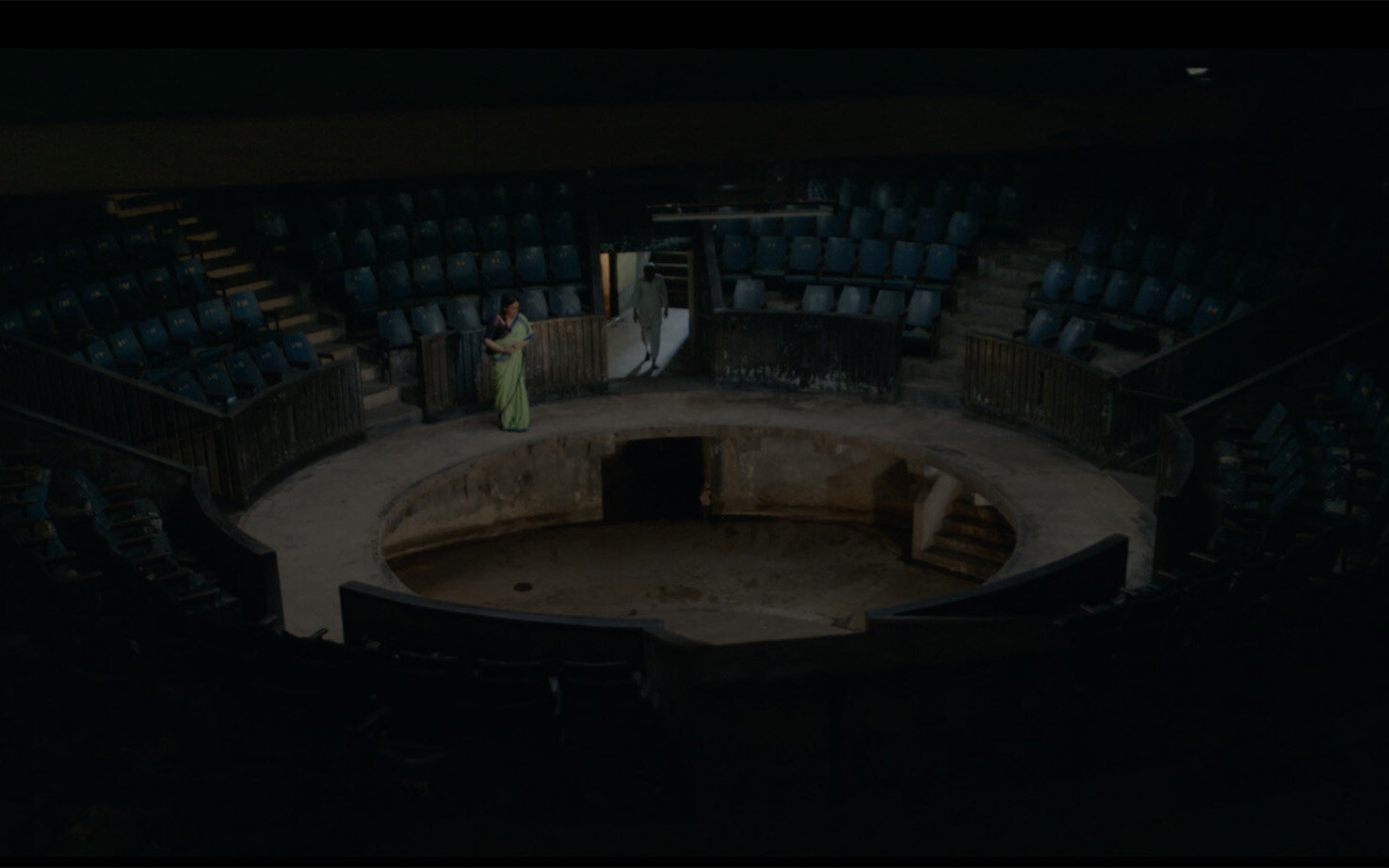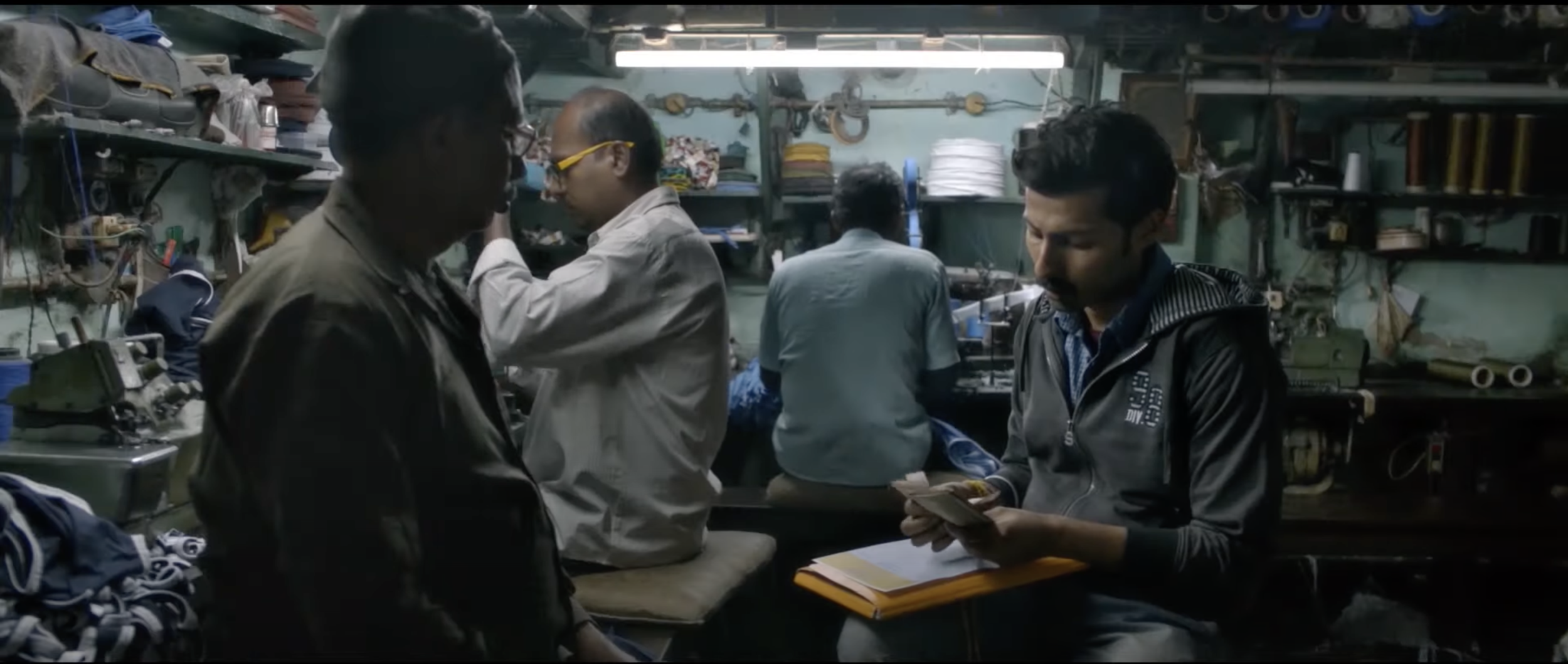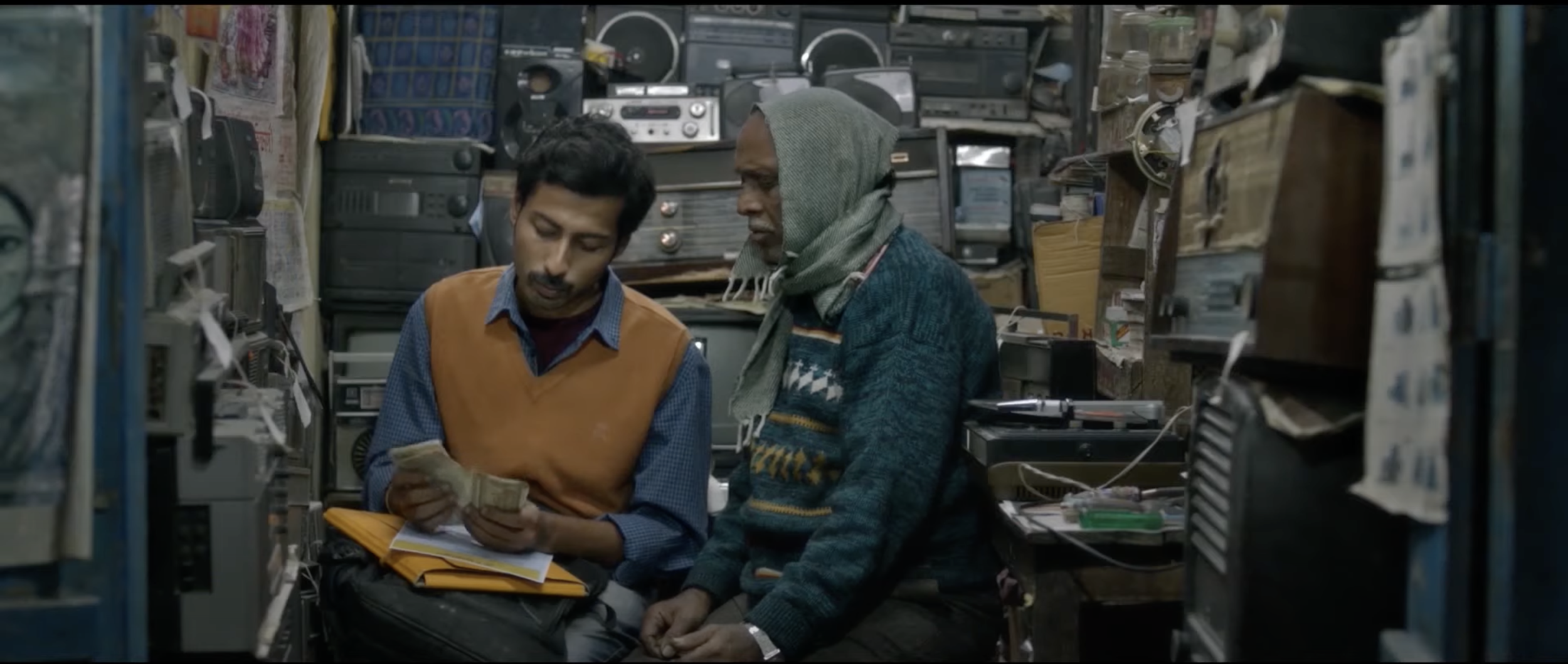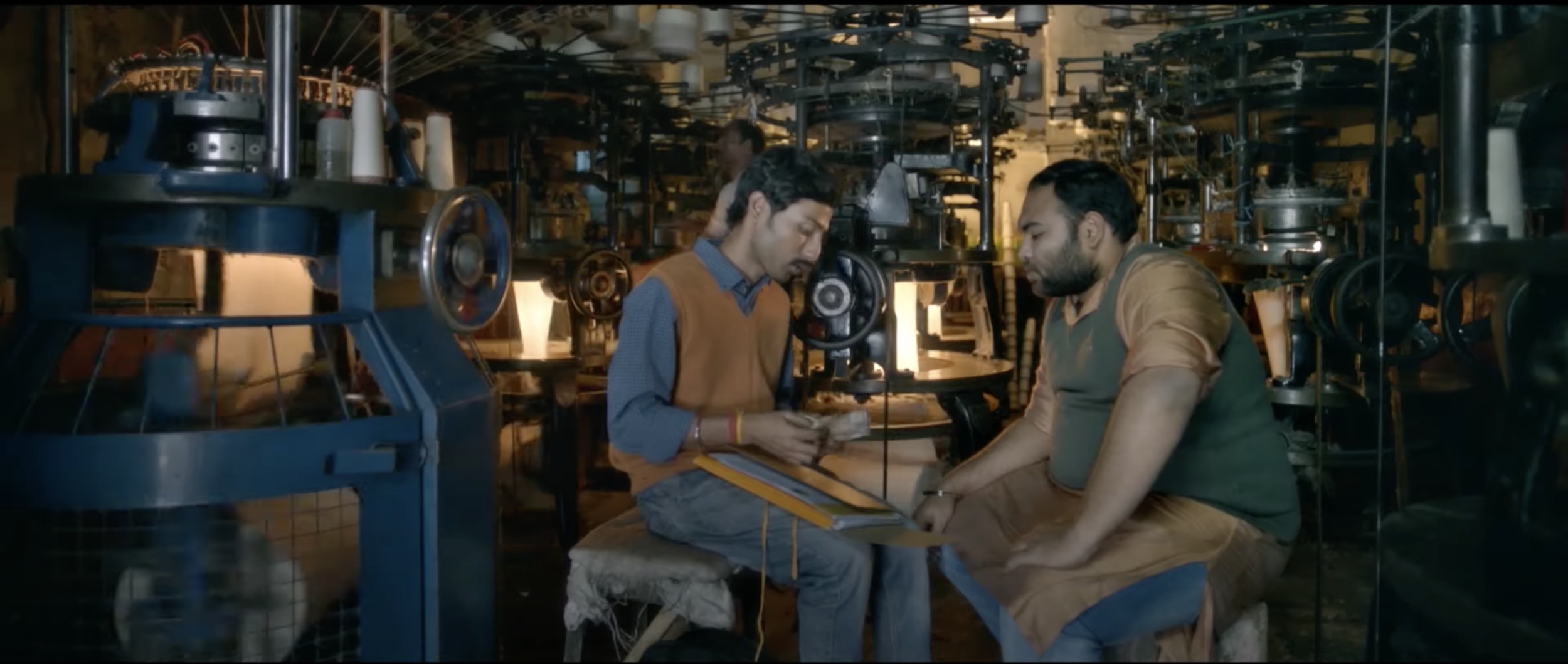Once Upon Time in Calcutta
Once Upon Time in Calcutta
Starring: Aditya Vikram Sengupta
Starring: Sreelekha Mitra, Satrajit Sarkar, Bratya Basu, Anirban Chakrabarti, Arindam Ghosh, Shayak Roy, Rikita Nandini Shimu
Country: India, Francia, Norvegia
Year 2021
Click Here for Italian Version
"Now, there are only ghosts here."
The Bengali poet, Rabindranath Tagore, Nobel Prize for Literature in 1913, was born in Calcutta in 1861 and died there in 1941.
In My Reminiscences, he described the heart of his city:
“So in the streets of Calcutta I sometimes imagine myself a foreigner, and only then do I discover how much is to be seen, which is lost so long as its full value in attention is not paid. It is the hunger to really see which drives people to travel to strange places.” (1)
Tagore imagines himself visiting Calcutta as a foreigner. There is so much to see in a metropolis with almost 15 million inhabitants.
What opinion would Tagore have about modern-day Calcutta?
What modern, strange places would he have found if he had returned as a foreigner today?
What disappointment would he have in the systematic dismantling of the city's culture?
What suffering would he have from the still rampant misery despite progress?
What despair would he have when he watched the numerous scams on television?
What pity would he have for reckless, selfish people ready to entrust all of their savings to swindlers?
What thoughts would he have about the dinosaur statue in the middle of the road?
What emotions would he have had in its destruction to build an overpass?
What anger would he have at the increasing speculation in construction?
What fury would he have for the many collapses of many badly constructed buildings?
What would Rabindranath Tagore think of the crazy prices of new homes?
What would he think of the frantic search for housing?
What would he think if he saw the price of the houses had reached 1.853 euros per square meter?
What would he think of the price of houses compared to the average monthly salary of 344 euros? (2)
What would he think of the 12% rate on a mortgage? (3)
Ela - the beautiful character of the film Once Upon a Time in Calcutta by director Adityavikram Sengupta, presented at the 78th Venice Film Festival - knows well the value of the apartments for her stressful research in Calcutta.
Ela was a famous Indian actress. Now, she has to work on a low-quality TV show.
Married, she had left her brilliant employment for the birth of her daughter. Unfortunately, she was born with a serious illness. To take care of her, she quit her career. With the death of her daughter, she has to restore her existence. Her relationship with her husband is over. They live in the same house but in separate rooms. She must look for new accommodation immediately. At a bank, she asks for a mortgage, but they refuse it due to a lack of guarantees. The film has a choral trend. Around Ela, there are other characters with their own independent stories but intertwined.
More human and sadder is the existence of the half-brother Bubu. Elderly, he lives with an old servant in his dilapidated theatre that belonged to his family. Now, it is just dust, totally ruined; its greatness, its old-fashioned charm has disappeared.
Raja is the son of Bubu's servant. He is involved in financial fraud on behalf of a swindler, who uses television programs to promote his bogus investments. Raja's task is to pick up money from greedy bourgeois or artisans, enthusiastic to speculate with their savings.
Then, there is the reappearance of Ela's youthful love. He is a builder. He has to defy crime in his business.
The opening scene is some vast big, bright red flashes on an entirely black background. It is an immense fire. From above, the camera shows Ela, her husband and their dog. They came back from the child's funeral. They are in pain, woman locks the door to her bedroom and cries. There is a photo of the dead girl. The red flashes are the flames of a pyre.
The houses are the leitmotiv of the story, the old ones and the new ones. This subject has a connection with Aditya Vikram Sengupta's first film, Asha Jaoar Majhe - Labor of Love.
For Ela, it is urgent to leave her current home. Inside, there are many bad memories and broken love. However, houses have an exorbitant cost and having financing is difficult, both in Calcutta and in the rest of the world. The director also agrees:
"The film, however, is set in Calcutta, but the story can be read as a global phenomenon." (4)
It is a global phenomenon, but in Calcutta, everything is more accentuated, poetic, Tagore would have said “strange”. The metropolis is the main protagonist while the theatre has a metaphorical meaning, abandoned by the miseries of life. Calcutta is a magnetic city. Living in Calcutta is not easy, and Ela's exhausting adventures are the proof. The passion of living is one: “complex love-hate relationship”. (5)
The metropolises of the world are changing inexorably. The upper classes are modifying them using two systems. The first is to increase security in their areas. They want to be distant and protected from who are behind socially and economically and, mostly, because they are very dangerous. The second is to create around their fortresses, a modern, advanced, efficient, global, organization of contacts, with similar people positioned worldwide. The same happens in Calcutta. The city increases the differences. The philosopher Zygmunt Bauman, in Liquid Love - On the Frailty of Human Bonds, briefly and effectively defines this evolution:
"The secession of the new global elite from its past involvement with the local populus, and the growing gap between the living/lived spaces of those who have detached and those left behind are the most significant of the social, cultural and political changes associated with the passage from the "solid" to the "liquid" phase of modernity." (P. 137) (translated by author)
The director has the same idea. In fact, he also narrates a liquid city. Calcutta is no longer the solid city of Tagore. Calcutta is packed with people, all together. They live, work, love, fight, die, but they are complete strangers. The liquid concept of the city is underlined by the author:
“The core of the city isn’t made of physical spaces but of people. That’s what I wanted to explore – the city and its various layers though the people. This is something I have been feeling for the past few years – the core of the city is kind of emptying out slowly. A lot of it has to do with globalisation and a booming information technology industry. There doesn’t appear to be a sense of great discovery, and getting to know people nowadays requires great emotional investment.” (6)
Calcutta, to Aditya Vikram Sengupta is a liquid city. He films the difference between the two types with a metaphorical series of busts by Tagore. He has an imposing figure with a thick beard and long hair. The statues are mixed with blood. Dreamed Calcutta is over, now it has become a liquid city.
The events are credible. To the director, they really happened. Therefore, the same experiences happen every day and everywhere. These episodes developed about the distances between people. The city is suffering, the facts are humanly monstrous. The cheat is evil, the ecosystem is ruthless:
“Because I explore the city a lot and I interact with everyone, that’s what gives me a lot of happiness. What is most fascinating for me is that we all live in the same place, but the spaces we inhabit are very different from each other. It is very interesting when all these people come together, and all the internal worlds interact, which is an inspiring starting point for me. A city is made of its people. It’s not about the infrastructure, or the roads and railways, because that is an extension of what these individuals create. Any city is made of people and their mindsets, and I recognized the importance of exploring the entire range of people that makes Calcutta what it is. It is a complexly woven fabric. I needed a well rounded image of it – the full chain and the ecosystem of the city.” (7)
The ecosystem is the liquid city. The director shoots some examples flawlessly. Ela works on a very low-level television program. They read the birth chart to the audience. During the live broadcast, however, she is frantically busy moving her hands. The TV studio is infested with mosquitoes. They shoo them away; they want, but it is impossible. Mosquitoes and birth charts are the effects of old and new Calcutta. The contrast between speech and images creates fun.
Ela is a fascinating lady. Many men court and desire her. She resists them, but the wish to live in a different house prevails. It is her cynicism. She is now disillusioned; after her daughter's death, she only wants to rebirth. The renascence must start with a new apartment, her obsession. Her face is melancholy, torment, she needs mourning elaboration. She is saturnine, so she can be envious and angry with her half-brother Bubu. The half-brother is depressed. He had a theatre, a family and now he is lonely, sad, irascible, jealous, suspicious: "it is my house, I decide if I should go out or not." Due to his misanthropy and persecution mania, he will fire even the servant, the only person who has been loyal to him.
Ela will try to have half of the theatre. She needs that money to buy a house. Bubu responds with hatred, chasing her away and denying him any rights.
The plot has many characters. They have their own human paths, but they intertwine without mixing too much. There is the sadness of Shishir, Ela's husband. Their bond has ended, but he continues to love her. He is self-destructive, hopeless, dejected and, alone with the dog. Another character is Raja. He is an accomplice in deception. The director shoots it with fast sequences. The sequences are all the same: Raja counts the banknotes just delivered by the naive misers. He is concentrated and eager in his quickly counting. The victims have all the same gaze: fixed on Raja with shining eyes full of greed to get richer.
A similar scene is the dialogue between Raja and his boss. Raja talks while he is eating. Raja has smelled the scam, so he speaks to him worried. People who gave him money would take revenge on him. However, the boss does not listen to him. He is eating and playing with his cell phone. The boss is disgusting. He wants to get rich with the misfortunes of others. He is the worst symbol of recent Calcutta.
The structure is not linear. The introduction of the roles is long. The motivation for the film is the wish of Ela to rebuild her life. Will she be able to do it despite the difficulties? Will she be able to get to the fateful house?
Ela resembles Nandini from Rabindranath Tagore's play, Red Oleanders. Both are determined, resolute women. In the end, Ela eventually steps onto the stage of the decrepit theatre again. As Nandini faces the king, Ela faces today's Calcutta.
In 2014, Adityavikram Sengupta directed Asha Jaoar Majhe - Labor of Love, presented at the Venice Film Festival. Both films have some points in common.
Asha Jaoar Majhe - Labor of Love is set in Calcutta, too. The protagonists, husband and wife, live in their apartment. Like Ela and Shishir, they have separate lives, but in Labor of Love it depends on shifts at work. One works in the daylight and the other one at night. They just meet at home for a few minutes. The couple's response is silence. There is always Calcutta, but the oversized representation is more focused on the social and economic aspects.
The house of Labor of Love and Ela's house are comparable. Apartments are full of life, full of objects, people live, but they are only collectors of loneliness and unhappiness.
Labor of Love has a simple structure. Now, with Once Upon Time in Calcutta, Adityavikram Sengupta has acquired considerable maturity, due to a well-written script, despite the detailed subject.
Once Upon a Time in Calcutta has a poetic ending, with many characters, many directions, many humanities. In the epilogue, everyone has failed, but Ela goes back to her ancient stage. The theatre is the deus ex machina, it does not clarify Ela's problem, but it allows her to remember. It is a mystical poem due to the importance of numbers, which are fundamental in solving the plot: numerology, vastu, the number indicates the conclusion.
The director is elegant in his trajectories of the camera. The camera goes up, down, moves with conviction, focusing on the protagonists. It is important to go back to the beginning. A truck packed with workers. It is dawn, the faces are sleepy, no one speaks, they are bricklayers on their way to the construction site. Thanks to their laborious job, often with many risks of life or accidents, they erect the buildings for the coveted houses.
https://www.goodreads.com/quotes/658847-so-in-the-streets-of-calcutta-i-sometimes-imagine-myself
https://www.numbeo.com/cost-of-living/country_result.jsp?country=India
https://www.numbeo.com/cost-of-living/in/Kolkata?displayCurrency=EUR
https://daily2021.venezianews.it/interviste/aditya-vikram-sengupta/ translated by author
https://asianmoviepulse.com/2021/09/interview-with-aditya-vikram-sengupta/


























Directors: Natasha Merkulova e Aleksey Chupov
Starrings: Yuriy Borisov, Timofey Tribuntsev, Aleksandr Yatsenko
Country: Russia, Francia, Estonia
Year 2021